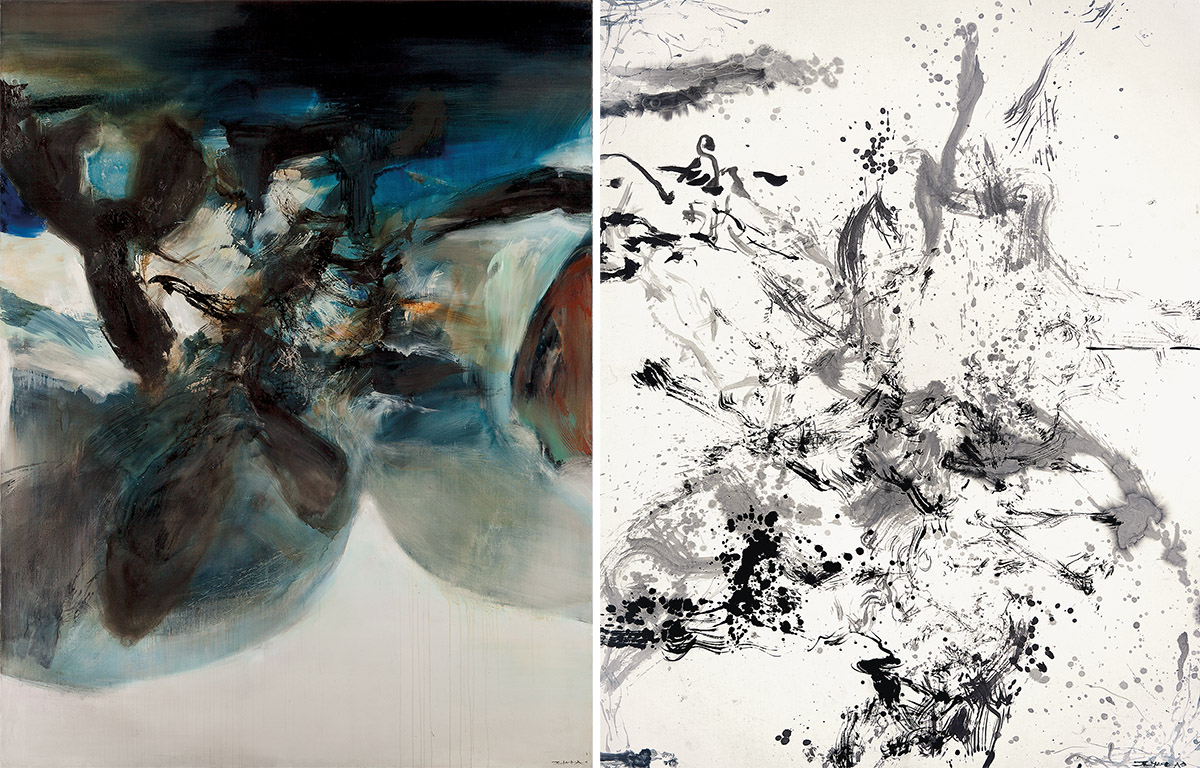ART CITIES:N.York-Zao Wou-Ki
 Zao Wou-Ki (who adopted the name Zao after 1947) is among the most recognized Chinese artists in the world. Born in Beijing, he attended the National School of Arts in Hangzhou in 1935, where he became a drawing instructor in 1941. In both his schooling and teaching domains, Zao moved freely between Chinese painting techniques and Western-inspired abstract compositions and found a profound affinity between the two traditions.
Zao Wou-Ki (who adopted the name Zao after 1947) is among the most recognized Chinese artists in the world. Born in Beijing, he attended the National School of Arts in Hangzhou in 1935, where he became a drawing instructor in 1941. In both his schooling and teaching domains, Zao moved freely between Chinese painting techniques and Western-inspired abstract compositions and found a profound affinity between the two traditions.
By Dimitris Lempesis
The exhibition of Zao Wou-Ki’s works at Gagosian Gallery pays homage to the close, enduring friendship between the artist and the Chinese-American architect I. M. Pei. Throughout his career, Zao Wou-Ki merged Eastern and Western aesthetic traditions in his paintings, retaining technical elements of Chinese painting styles while embracing European Modernism. As a student in China, he studied ink drawings and classical Eastern painting. In Paris, where he moved in 1948, he continued exploring Impressionism and Expressionism. Inspired by Paul Klee and his appreciation of Eastern art, Zao Wou-Ki began to seriously contemplate nature in his own work, and to incorporate traditional Chinese calligraphy into his evolving artistic language. The earliest works in this exhibition, made in 1979 and 1980, were commissioned by Pei and served as prototypes for a series of ink works that followed. The remaining seven paintings on view,in India ink on paper mounted on canvas, and from 2006 employ the same medium, with their free-flowing brushstrokes applied in a subtle yet concentrated method. Zao Wou-Ki’s gestures in these ink works are rapid, appearing spontaneous yet attesting to his masterful control of mark making. The entire series is untitled, removing the interplay between brushstrokes and specific ideas. Zao Wou-Ki created these works by laying the absorbent white paper flat on the floor and painting from above, allowing the thin black ink to drop, with controlled use of gravity, onto its support, and in doing so, forming a link between Abstract Expressionism and traditions of Chinese ink painting and calligraphy. In one work, gestures progress vertically across the canvas, underscoring the tenacity of each stroke, while in another the ink is concentrated toward the right side before bursting across the canvas in a flurry of vertical lines. Zao Wou-Ki’s compositions present a delicate balance, harboring moments of risk within an exploration of abstraction, exploding onto the paper at different velocities as if tracing the artist’s innermost impulses and desires. In 1948, Zao moved to Paris and quickly rose to prominence as an abstract gestural painter, befriending other artists such as Alberto Giacometti and Joan Miro. Abstraction was not well received in France during the immediate post–World War II period, as its apparent lack of content or subject were deemed inept to express the brutal realities of the war and its aftermath. But Zao and other artists such as Pierre Soulages and Hans Hartung were determined to show that abstract painting could speak to this very condition through the intuitive language of color and line. To this end, Zao began to paint more boldly than ever, combining expressive lines with deeply saturated color. In the mid-1950s he incorporated Chinese influences more directly, sometimes using actual calligraphy instead of loose and winding brushstrokes. During this period, Zao frequently traveled to New York, where he met Barnett Newman, /Franz Kline, and other Abstract Expressionists. Beginning in 1966, Zao Wou-Ki began to explore new forms of expression. He sought inspiration from Western art, adapting into his own creation polyptychs of the Middle Ages and the Renaissance. Those early polyptychs are mostly altarpieces in the forms of diptychs and triptychs that depict scenes of saints and humans. Marked by a strong narrative, they are often eye-catching large-scale works that aptly serve the purpose of proselytizing the Christian faith. In many ways, this genre relates closely to the ancient Asian art of folding screens. Although Zao adopted such a traditional format, he eschewed the straightforward narrative or ornamental qualities of the convention. Instead, he injected his own individual expression and innovative ideas, forging an entirely new path. Later in the 1970s, Zao’s paintings become less focused on line and gesture, striving instead toward an ambient and dreamlike atmosphere in which foreground and background are entirely blurred. By the 1980s, Zao had already rejected such notions as “battle” and “conquer”. Having travelled the world and amassed experience in the art world for two decades, Zao had attained contentment; he had learnt to create art without any restrictions, handling all subject matter with ease.
Info: Gagosian Gallery, 976 Madison Avenue, New York, Duration: 9/9-26/10/19, Days & Hours: Mon-Sat 10:00-19:30, https://gagosian.com








